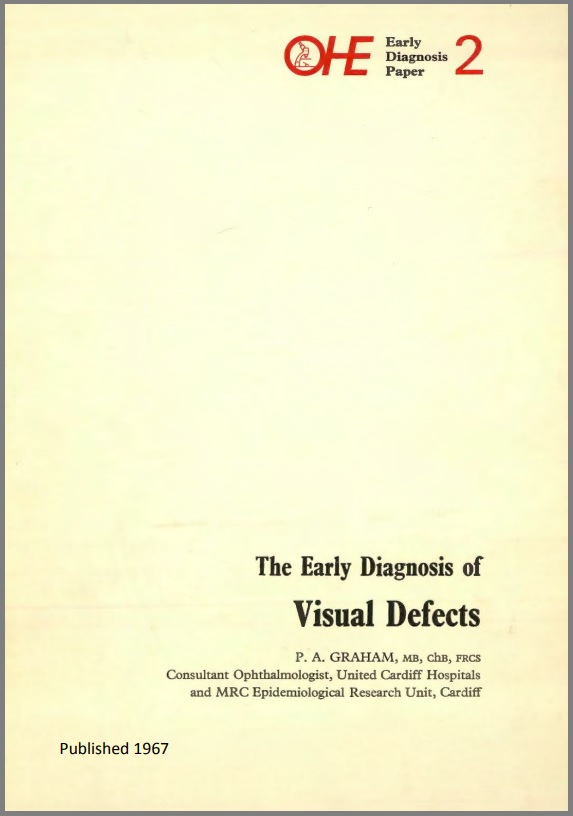Sign up to our newsletter Subscribe
Analysing Global Immunisation Expenditure

Usually the defect will occur gradually affecting either the visual acuity of one eye only, or the visual field of one or both eyes.
In the very young, the defect which goes unnoticed until school age and the consequent school medical examination is…
Usually the defect will occur gradually affecting either the visual acuity of one eye only, or the visual field of one or both eyes.
In the very young, the defect which goes unnoticed until school age and the consequent school medical examination is unilateral suppression amblyopia induced by strabismus or anisometropia. There is a very much better response to treatment if the problem can be detected at about age three when it is possible to assess a child’s visual acuity with accuracy. Further there now exist appropriate diagnostic techniques such as the simple ‘cover test’ which can be efficiently administered by an orthoptic technician to children of this age.
In the elderly, the more important causes of defective vision include vascular disorders, cataract, macular degeneration, diabetic retinopathy and chronic glaucoma. However, only the last two offer scope for early detection and treatment. The detection of diabetic retinopathy depends in turn on the early detection of diabetes. Chronic glaucoma is an important cause of blindness and signs of the disease may be present for a long while before the patient is conscious of any abnormal symptoms and it is therefore a suitable problem for early detection. Treatment is based entirely on the reduction of intra-ocular pressure. Detection of the disease is frequently by measurement of this pressure by tonometry, but this presents problems in that it is not possible to indicate an upper limit for normal pressure. It also gives a positive finding in many who have normal visual fields and who are unlikely to have future loss of vision. It would be unreasonable to treat these patients in the hope that they might benefit, especially as the treatment has undesirable side effects and interferes with the subjects’ enjoyment of life. There is a clear need therefore, for the development of tests which can be used on those with pressures above a certain level and which will predict more accurately the probability of future loss of vision.
Meantime, other methods of early diagnosis, all of which are cheaper than tonometry, include determination of the visual fields, observing the retina by ophthalmoscopy and selection by family history. The first method detects those who already have a significant loss of function and is thus concerned with established disease rather than the true pre-symptomatic stage. Ophthalmoscopy is practised by every optician in the course of a routine eye test, but the number of false positives is high until a latest age in the disease. There is a high prevalence of abnormality amongst relatives of known sufferers, so this does provide a method of initial selection to be followed by a more thorough examination. It is recommended that this last method be implemented under the direction of the General Practitioner.
Graham, P.A.
(1967) Early Diagnosis of Visual Defects. OHE Early Diagnosis Series. Available from https://www.ohe.org/publications/early-diagnosis-visual-defects/